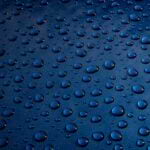
Coating Adhesive Sealant and Elastomer Additives (CASE)
SEQENS supplies a variety of specialty ingredients
For the coating, adhesive, sealant and elastomer markets. These include:
- Coalescing agents & other solvents
- Photoinitiators
- Rheology modifiers
- Binders
Should our range of products not satisfy your requirements then it may be possible for our custom manufacturing business to develop a bespoke offer to suit your needs.
Coasol technology
A range of non VOC, non hazardous, biodegradable and biosourced solvents

What advantages does
the technology provide ?
The Coasol product range manufactured by Seqens are non-VOC coalescent esters that provide many advantages over traditional solvents. Coasol and Coasol 290 Plus that are :
- Not classified as VOC’s globally
- Very low/no odour
- Biodegradable
- Non toxic
- Non flammable
- Non hazardous
- Conform to the most stringent of clean air standards
- Globally registered
Paints and Coating
Efficient coalescing agents for use in water based paint formulations. As an alternative to more hazardous solvents in more traditional solvent based materials EG D40/D60 + other.
Others uses
- Printing Inks
- Degreasers
- Raw materials for coatings industry
- Adhesives
- Graffiti removers
- Cleaning products
- Aqueous defoamer/antifoam
Bio Coasol technology
Biosourced Bio Coasol and Bio Coasol 290 Plus,
support you in your way for more sustainability.

Bio Coasol and Bio Coasol 290 Plus are now also manufactured using bio sourced raw materials
- Bio Coasol – 62% Bio renewable content
- Bio Coasol 290 Plus – 60% Bio renewable content
Both products are identical in chemistry to our petrochemical based products. This will enable existing customers to formulate/approve first on regular grades and then move later to the bio sourced products when needed, with the added benefit that there would be no further development work required to switch up and maintain all of the benefits of current Bio Coasol Technology.
About Bio Coasol Technology
Bio Coasol technology is a proprietary method of producing non-VOC solvents that provide many advantages over traditional solvent:
- Not classified as VOC’s globally
- Very low/no odour
- Biodegradable
- Non flammable
- Non hazardous
- Conform to the most strigent of clea air standard
- Globally registered*
*Bio Coasol 290 Plus undergoing TSCA registration currently
Other solvents
SEQENS offer a wide range of solvents including conventional. non-hazardous, biobased and circular. Products are designed to help customers with their specific challenges relating to health, safety, sustainability and performance in the paint and coating industry.

Conventional solvents
- nPentyl Propionate (CAS 624-54-4)
- nButyl Propionate (CAS 590-01-2)
- Dibutyl Ether (Cas 142-96-1)
Non hazardous solvents
- Estasol
- Dimethyl Adipate/Dimethyl Glutarate (25:75 mix)
- Dimethyl Adipate (CAS 627-93-0)
- Diisopropyl Adipate (CAS 6938-94-9)
- Dimethyl succinate (106-65-0)
- Ethylene Glycol Diacetate (CAS 111-55-7)
Biobased solvents
- Bio Butyl Acetate (CAS 123-84-6)
- Bio Dimethyl succinate (CAS 106-65-1)
- Bio ethylene glycol Diacetate (CAS 111-55-8)
- Bio Hexyl Acetate (CAS 142-92-7)
- Bio Octyl Acetate (CAS 112-14-1)
- Bio nPropyl Lactate (CAS 53651-69-7)
- Bio nButyl Lactate (CAS 34451-19-9)
- Bio Isoamyl Lactate (CAS 19329-89-6)
- Bio Solketal (CAS 100-79-8)
- Bio Dibutyl Ether (CAS 142-96-0)
- Bio Isoamyl acetate (CAS 123-92-2)
- Bio Isoamyl alcohol (CAS 123-51-3)
Circular solvents
- Isopropanol (CAS 67-63-0)
- Ethylene Glycol Diacetate (CAS 111-55-7)
A range of photoinitiators

Photoinitiators are compounds that produce radicals when exposed to UV light.
These then react with monomers and / or oligomers to initiate polymer chain growth. The UV initiator system is critical because it determines the UV-curing speed and significantly affects the
comprehensive performance of cured materials such as yellowing, odor, migration from cured
film and so on. They are essential ingredients of all UV-curable adhesives, inks and coatings.
VICURE 25
CAS 18994-98-4
Benzoin Acrylate
VICURE 25 is a white crystalline solid used as a copolymerisable photoinitiator. It is an efficient UV radial photoinitiator for polymerization and crosslinking of mono- and multifunctional unsaturated monomers which activates at 250 nm wavelength, widely used for (meth)acrylate polymerization used in pressure sensitive adhesives and can also be used for UV curable inks.
VICURE 40
CAS 56467-43-7
4-Benzoylphenyl Methacrylate
VICURE 40 is a white to light yellow powder used as a copolymerisable photoinitiator. It is a benzophenone functionalized monomer used as an efficient UV radical photoinitiator for polymerization and crosslinking of block copolymers that activates at 255 nm wavelength, widely used in UV curable compositions and inks.
VICURE 55
CAS 18994-98-4
Benzoin Acrylate
VICURE 25 is a white crystalline solid used as a copolymerisable photoinitiator. It is an efficient UV radial photoinitiator for polymerization and crosslinking of mono- and multifunctional unsaturated monomers which activates at 250 nm wavelength, widely used for (meth)acrylate polymerization used in pressure sensitive adhesives and can also be used for UV curable inks.
A range of rheology modifiers
They are used to modify the rheology of paint and coating formulations.

In industries like coatings, paints, and inks, rheology plays a crucial role in controlling ease of application, product stability, and aesthetic properties after drying.
Proper rheological control ensures that a product is easy to apply while maintaining its long-term properties, such as corrosion or abrasion resistance.
Thixotropic calcium sulfonate additives offer by SEQENS provide:
- Corrosion protection
- Excellent anti-settling
- Good anti-sag properties in low or medium build coatings with no need for heat activation.
RHEOPOL 100
Phtalate free, Rheology modifier, dispersing and stabilizer agent for PVC pastes.
GELCOT 100
Rheology control additive for paints and coatings: Polyesters, acrylics, urethanes, improve sag resistance and pigment settling
ARCOT 645BS and ARCOT 610HV
Protection products for ballast tank, industrial gears and other devices, automotive undercoating, cavity protection as well as anticorrosion waxes formulations.
A range of binders
tetraethylorthosilicate and another form of high purity amorphous silica.

Applications
HYDROSIL HT20E’s degree of hydrolysis and pH have been optimized to provide the necessary reactivity and adequate storage stability. It has several advantages over binder formulations of similar silica concentration:
- Increased stability in store. The change in viscosity during the first 6 months is minimal.
- Increased stability in the slurry mix. This enables close control of viscosity and density
and prolongs the useful life of the slurry. - More filler is taken up in the slurry mix for the same viscosity.
- Bonding strength from the available silica is higher.
- Mold coats air dry quicker.
Finds applications as binder:
- In ceramic molds process.
- Investments foundries, both in mechanical and manual molding systems.
- In anticorrosion paints such zinc-rich paints and shop primers typically used for bridges,
ships and structural steel in severe environments. - In refractory products.
Control of slurry
For optimum stability the pH of slurries should be maintained at 1.0-
1.5 by adding 10% weight/volume of sulphuric acid in alcohol, and the slurry temperature should be maintained at 20°C±1°C. Viscosity and density should be checked twice daily.Binder and filler should preferably be pre-mixed in a separate tank for topping up the main tank. Losses of volume due to evaporation of solvent should be made
up by adding alcohol. The tanks should be left covered when not in use.

